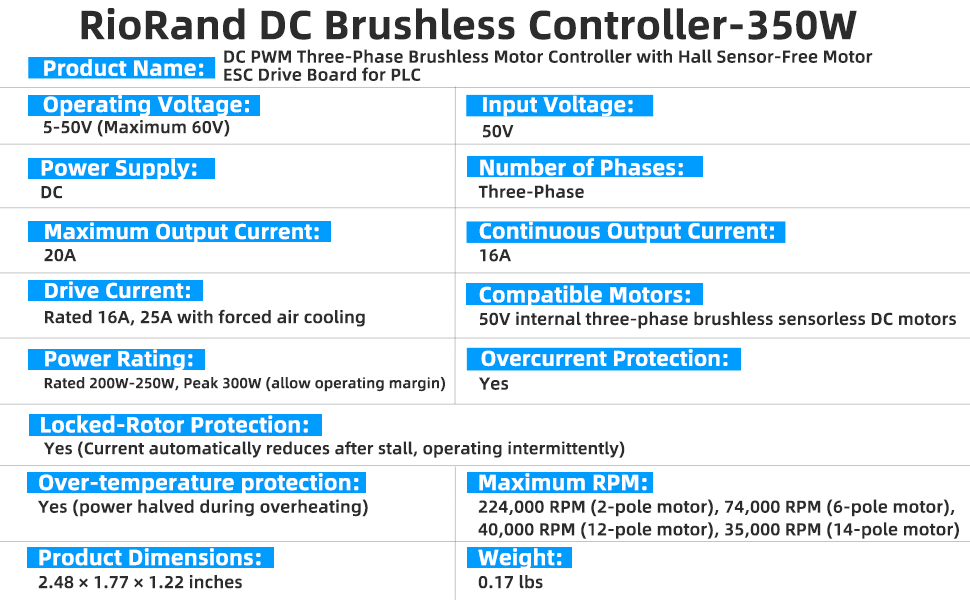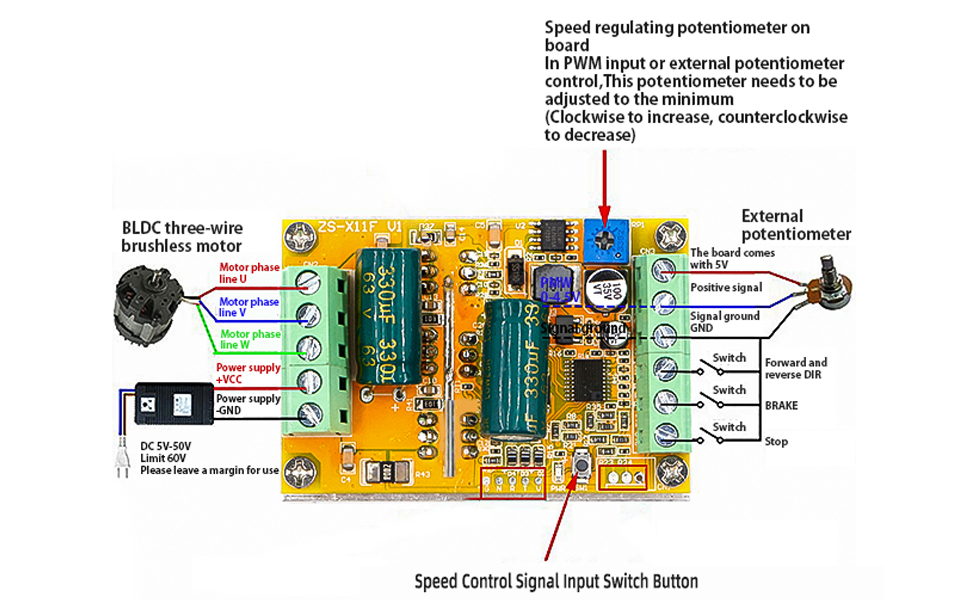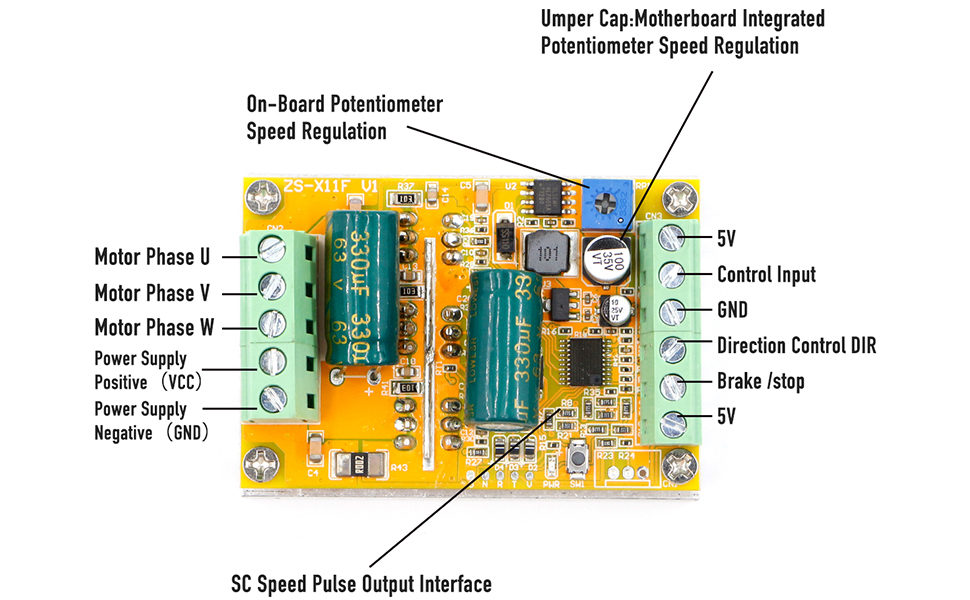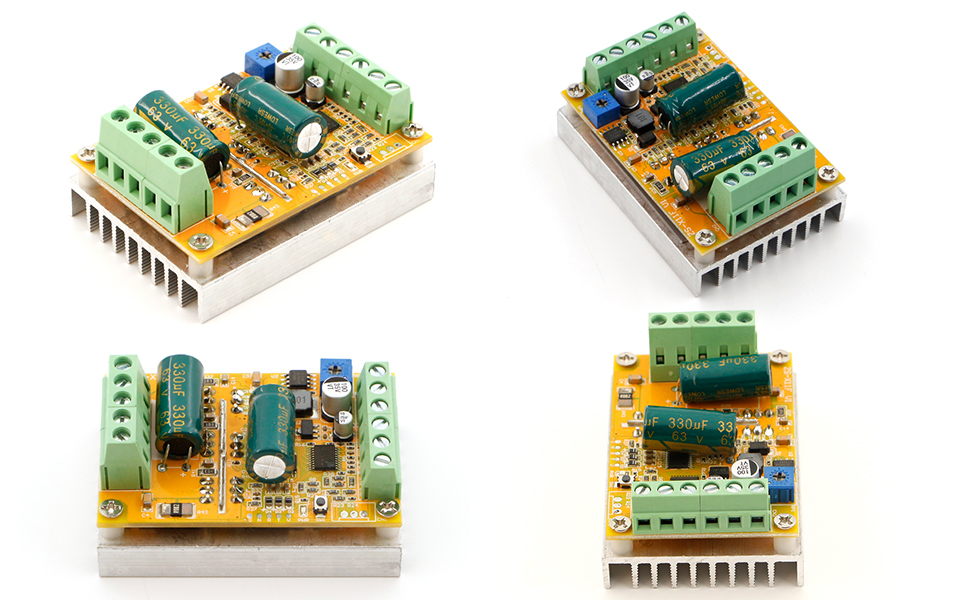Customer Services
Copyright © 2025 Desertcart Holdings Limited
Desert Online General Trading LLC
Dubai, United Arab Emirates








⚙️ Master your motor’s speed with precision and power — no sensors, no limits!
The RioRand 300W 5-50V PWM DC Brushless Motor Speed Controller is a high-power, three-phase sensorless controller designed for brushless DC motors. It supports multiple speed control signals, features built-in overcurrent protection, and includes a heat sink and potentiometer for stable, ready-to-use performance. Ideal for professionals seeking reliable, versatile motor control without the complexity of Hall sensors.







Trustpilot
1 month ago
2 weeks ago